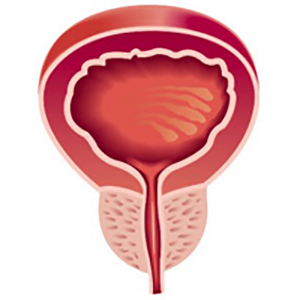 Smart Citations
Smart CitationsSee how this article has been cited at scite.ai
scite shows how a scientific paper has been cited by providing the context of the citation, a classification describing whether it supports, mentions, or contrasts the cited claim, and a label indicating in which section the citation was made.
Magnetic resonance imaging target fusion biopsy vs. transrectal ultrasound-guided biopsy - A comparative study of ISUP score upgrading risk in the final radical prostatectomy specimen
Objectives: The aim of this study was to com-pare the risk of International Society of Urological Pathology (ISUP) score upgrading between magnetic resonance imaging targeted fusion biopsy (MRI-TB) and tran-srectal ultrasound-guided biopsy (TRUS-B) in the final radical prostatectomy (RP) specimen pathological report.
Materials and methods: This retrospective single center study included 51 patients with prostate cancer (PCa) diagnosed with MRI-TB and 83 patients diagnosed with TRUS-B between October/2019 and July/2021. We compared the rates of ISUP score upgrading between both groups after robotic-assisted radi-cal prostatectomy (RARP) and the specific transition of each ISUP score based on biopsy modality. The rate of ISUP score concordance and downgrading were also assessed. To define the intra and interobserver concordance for each ISUP score in biopsy and RP specimen for each biopsy modality, the Cohen’s Kappa coefficient was calculated. ISUP scores and biopsy modal-ity were selected for multivariate analysis and a logistic regres-sion model was built to provide independent risk factors of ISUP score upgrading.
Results: The difference of the rate of upgrading between MRI-TB group and TRUS-B group was statistically significant (p = 0.007) with 42.2% of patients of TRUS-B group experiencing an upgrade in their ISUP score while only 19.6% in MRI-TB group. Concordance and downgrading rates did not statistically differ between the two groups. Strength of concordance using Cohen’s Kappa coefficient was fair in both groups but higher in MRI-TB group (TRUS-B group k = 0.230; p < 0.001; concordance: 47%vs. MRI/TB group k = 0.438; p < 0.001; concordance: 62.7%). Biopsy modality and ISUP 1 on biopsy were independent predic-tors of ISUP upgrading after RP.
Conclusions: MRI-TB is highly accurate with lower risk of PCa upgrading after RP than TRUS-B. Patients with ISUP 1 on biopsy have greater susceptibility to upgrading their ISUP score.
Downloads
How to Cite
PAGEPress has chosen to apply the Creative Commons Attribution NonCommercial 4.0 International License (CC BY-NC 4.0) to all manuscripts to be published.

 https://doi.org/10.4081/aiua.2022.3.278
https://doi.org/10.4081/aiua.2022.3.278





